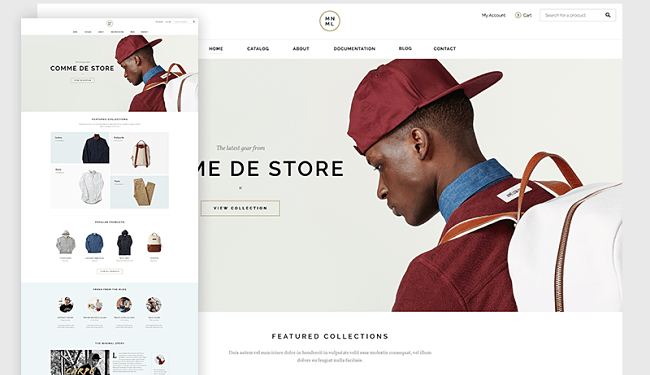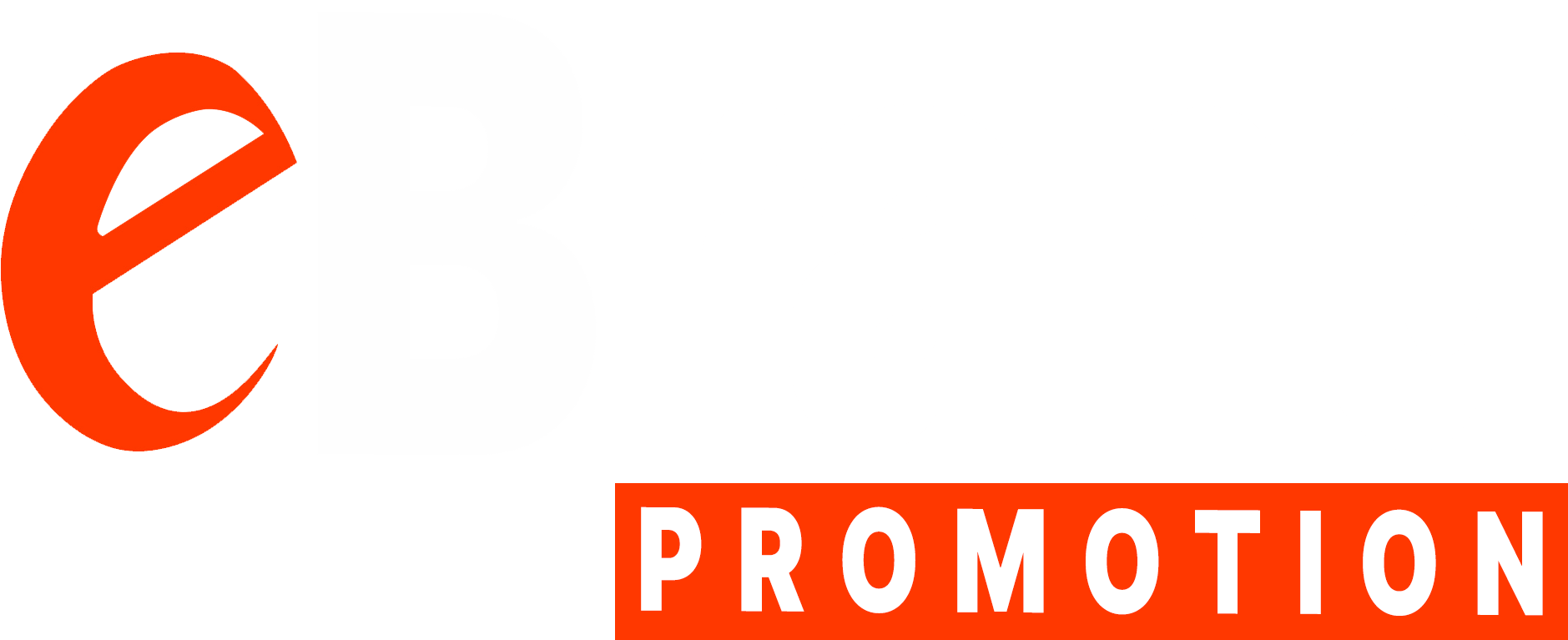The ecommerce industry is booming, and Nigeria is not left behind.
More people are turning to the internet to shop for their favorite products and services, and businesses are catching on to the trend.
However, in the world of ecommerce, the website homepage is the first thing your customers see.
It’s your brand’s digital storefront, and its design plays a crucial role in determining whether your visitors stay or leave.
A well-designed ecommerce homepage isn’t just about aesthetics; it’s about functionality, user experience, and creating a lasting first impression.
If you’re a Nigerian entrepreneur looking to take your business online, this guide will walk you through everything you need to know about ecommerce website homepage design.
Why Your Ecommerce Website Homepage Design Matters
Your homepage is the face of your business online.
It’s the first point of contact between you and potential customers.
In a country like Nigeria, where ecommerce is growing but still relatively new for many, the impression your homepage leaves can either win over customers or send them away.
Here are some reasons why your ecommerce website homepage design is crucial:
- First Impressions Count: It takes less than a second for users to form an opinion about your site. A well-designed homepage can instantly convey trust and professionalism.
- Conversion-Driven Design: A good design isn’t just about looking nice. It encourages visitors to explore your site and buy products. Your homepage design should guide customers to take specific actions, like making a purchase or signing up for a newsletter.
- Brand Representation: Your homepage is an extension of your brand. It should reflect your brand’s identity, values, and message in a way that resonates with your audience.
- Navigation and User Experience: If visitors can’t find what they’re looking for quickly, they’ll leave. Clear navigation, intuitive layout, and fast load times are essential to retain potential customers.
- Mobile Responsiveness: With the rise of smartphone use in Nigeria, your website needs to be mobile-friendly. A homepage that isn’t optimized for mobile devices risks losing a large chunk of potential customers.
Key Elements of an Effective Ecommerce Homepage Design
Creating an ecommerce homepage that attracts and retains customers requires focusing on several key elements. Here’s what you need to include:
1. Clear Logo and Branding
Your logo should be prominently displayed on your homepage.
This isn’t just about brand recognition—it’s about building trust. Customers associate a professional logo with a legitimate business. Ensure your logo reflects the identity of your business, and that it’s easy to recognize.
In Nigeria, a growing number of ecommerce sites are local, so emphasize your Nigerian roots in your branding to build trust with your local audience. Incorporating colors, designs, and patterns inspired by Nigerian culture could give you a unique identity.
2. Simple and Intuitive Navigation
Your ecommerce website homepage should have easy navigation.
This is one of the most important elements of user experience. Use a clear menu that categorizes your products logically. Avoid cluttered designs that confuse users.
For example, a fashion ecommerce site could categorize its products into “Men’s Fashion,” “Women’s Fashion,” “Accessories,” and so on. Include a search bar at the top of your homepage to help users quickly find what they are looking for.
3. Strong Value Proposition
Your value proposition is what sets you apart from competitors. What makes your products or services unique?
Why should customers buy from you?
Make this clear on your homepage. Use bold headings and concise language.
For example, if you sell skincare products specifically made for Nigerian skin types, highlight this on your homepage. It could be something like: “Natural Skincare, Made for the Nigerian Climate.”
4. High-Quality Visuals
Images and videos are powerful tools for ecommerce websites. Use high-quality images of your products that allow users to visualize what they are buying. In addition to product images, lifestyle photos that show your products in use can be more engaging.
For example, if you’re selling fashion, display photos of models wearing your clothes in different Nigerian settings—whether it’s a bustling Lagos street or a peaceful garden in Abuja.
5. Featured Products and Promotions
Showcase your bestsellers or new arrivals on your homepage.
Highlight promotions and discounts to entice visitors to click and explore further. This can be in the form of banners, product carousels, or call-to-action buttons like “Shop Now” or “Get 20% Off Today.”
For instance, if you’re running a Black Friday sale, your homepage should make this immediately clear with eye-catching banners that drive urgency.
6. Clear Call-to-Actions (CTAs)
Your homepage needs strong call-to-action buttons.
Whether it’s “Shop Now,” “Sign Up for Newsletters,” or “Learn More,” these buttons should be placed prominently and in a way that encourages visitors to take immediate action.
In Nigeria, many people may still be skeptical about online shopping. Use your CTAs to reassure them with phrases like “Free Delivery on All Orders” or “30-Day Money-Back Guarantee.”
7. Customer Testimonials and Trust Badges
One of the most common concerns Nigerians have with ecommerce is the trust factor.
Many people worry about online scams, delivery issues, and the quality of products. Including customer testimonials and reviews on your homepage can help ease these concerns.
You should also display trust badges such as “Secure Payment,” “Verified by VISA,” or “100% Authentic Products” to build credibility.
8. Fast Load Times
Nigerian internet connections vary, so your website needs to load quickly, especially on mobile devices.
Use optimized images and minimize unnecessary scripts to ensure your homepage loads fast. A slow website can frustrate users and lead to a higher bounce rate.
9. Responsive Design for Mobile Users
Over 50% of internet users in Nigeria access the web via mobile phones.
A mobile-responsive homepage is essential for capturing this audience. Test your site on multiple devices to ensure a seamless experience whether users are visiting from a desktop, smartphone, or tablet.
10. Local Payment Options
Nigerian shoppers prefer payment methods that are familiar to them.
Make sure your homepage indicates that you accept local payment methods such as Paystack, Flutterwave, and local bank transfers. If you offer payment on delivery, clearly display this to attract customers who are still cautious about paying online.
Common Misconceptions About Ecommerce Website Homepage Design
1. More Content Equals a Better Design
Many Nigerian entrepreneurs believe that the more content they cram into their homepage, the better it will be.
However, this is far from the truth. A cluttered homepage overwhelms visitors and can confuse them, leading to higher bounce rates.
Instead, focus on simplicity and clarity. A clean, minimal design that highlights your key products and messages is more effective than a busy, overloaded page.
2. Aesthetic Design Is Enough
While it’s important for your homepage to look good, aesthetics alone won’t keep users engaged.
Functionality and user experience are just as crucial. Think about your homepage as a tool to guide users through their shopping journey, not just as a visual display.
3. One Size Fits All Design
Some Nigerian entrepreneurs make the mistake of using pre-built templates without considering their specific audience.
Your ecommerce homepage should be customized to reflect the needs and preferences of your target market. What works for an audience in Europe may not necessarily resonate with Nigerian consumers.
For example, in Nigeria, addressing issues like power supply and delivery challenges may require specific design elements such as clear delivery timelines and offline shopping options.
FAQs About Ecommerce Website Homepage Design
1. How Much Should I Invest in My Ecommerce Website Design?
The cost of designing a good ecommerce website can vary widely.
If you’re working with a limited budget, you might start with a basic template and upgrade as your business grows. However, it’s crucial to invest in features that improve user experience, such as responsive design, fast loading times, and secure payment systems.
Consider working with a local Nigerian ecommerce web designer who understands the market and can create a homepage that resonates with your audience.
2. How Do I Ensure My Homepage Is User-Friendly?
Start by keeping your design simple and intuitive.
Your navigation should be straightforward, and your key products should be easily accessible. Regularly test your site from a user’s perspective, both on desktop and mobile devices.
Ask for feedback from friends, family, or even customers to identify areas for improvement.
3. What Content Should I Include on My Homepage?
Your homepage should include your logo, a navigation menu, a strong value proposition, featured products, customer testimonials, and clear call-to-action buttons. Don’t forget to highlight any ongoing promotions or special offers.
4. How Can I Build Trust with Nigerian Customers Through My Homepage?
Trust is crucial in the Nigerian ecommerce space.
Include customer testimonials, trust badges, and clear contact information. Also, highlight your payment options, especially those familiar to the local market, such as Paystack and Flutterwave.
Offering a cash-on-delivery option is one of the best ways to reassure skeptical customers in Nigeria.
5. How Often Should I Update My Ecommerce Homepage?
Your homepage should be dynamic and change regularly to reflect new products, promotions, and seasons.
At the same time, avoid making too many drastic changes too often, as this can confuse returning visitors. Strive to strike a balance between consistency and freshness.
Examples of Nigerian Ecommerce Sites with Great Homepage Designs
- Jumia Nigeria
Jumia is one of the biggest ecommerce platforms in Nigeria. Its homepage is clean and user-friendly, with clear navigation, prominent product categories, and attractive promotional banners. The homepage reflects local preferences with its variety of local and international brands and payment options. - Konga
Konga is another popular ecommerce site in Nigeria. Its homepage design focuses on highlighting deals and discounts while also offering clear navigation. The use of bold images and strategically placed call-to-action buttons helps in driving conversions. - Alibert Furniture
The homepage of alibertfurniture.com features a clean, modern design with a prominent banner showcasing their latest furniture collections and deals. It offers easy navigation with clear categories like Bedroom, Dinning, Sofa, Kitchen, Office etc. along with featured products and a responsive layout optimized for both desktop and mobile users.
Conclusion
Designing an ecommerce website homepage that resonates with Nigerian consumers involves more than just aesthetics.
It’s about understanding your audience, providing clear navigation, and building trust through the right messaging, visuals, and features.
From incorporating local payment options to ensuring fast load times and mobile responsiveness, every element of your homepage contributes to the overall success of your online business.
In a competitive market like Nigeria, getting your homepage design right can set your business apart and lead to increased sales and customer loyalty.
By following the guidelines in this article, you’ll be well on your way to creating an ecommerce homepage that attracts and retains customers, helping your business grow in the fast-evolving Nigerian ecommerce landscape.


